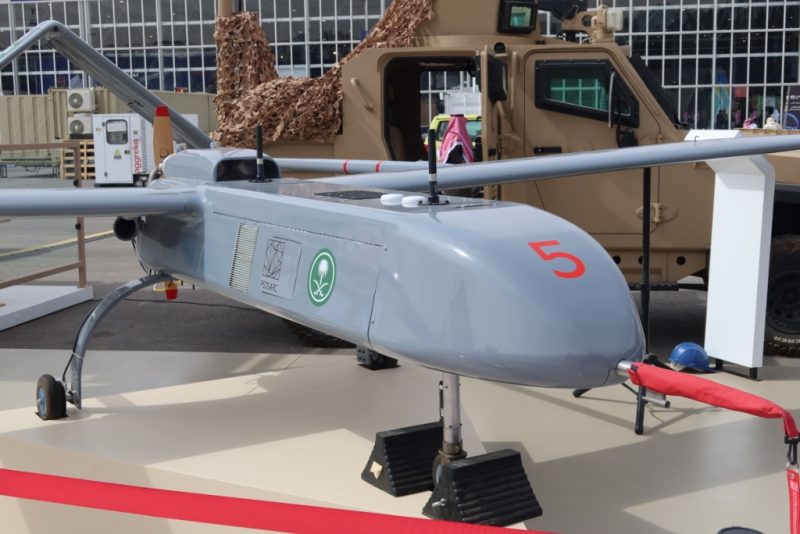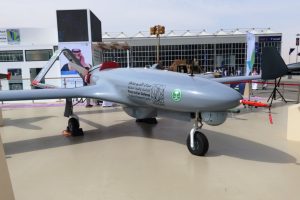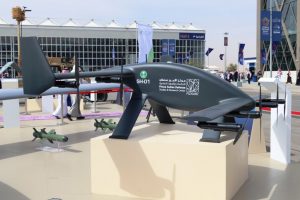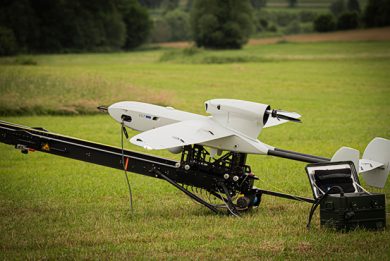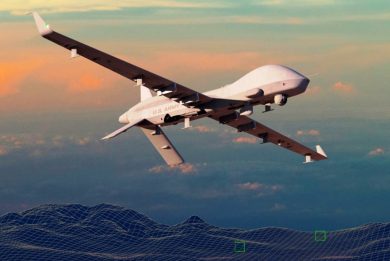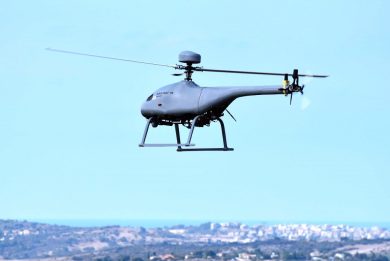WDS 2024 – New UAVs under development at Saudi PSDSRC
The Saudi Prince Sultan Defense Studies and Research Center (PSDSRC) exhibited in the outside area at the World Defense Show the latest evolutions of its UAVs
Unmanned air vehicles (UAVs) have definitely become a key player on the battlefield, hence it is not a surprise that many industrial and research entities are focusing their efforts on new and more effective systems.
At WDS 2024 the PSDSRC exhibited the well known Skyguard, its 250 kg maximum take-off weight (MTOW) tactical UAS with a 50 kg payload, capable to operate for 8 hours at a maximum altitude of 18,000 ft at a maximum speed of 100 knots. Following the agreement between PSDSRC and the Advanced Electronics Company, a subsidiary of SAMI (Saudi Arabian Military Industries), the system was put through further testing. While initial ones were aimed at verifying safety, bringing to the certification that gave the authorisation to fly, performance tests followed and now the Skyguard is being prepared for production.
Two new airframes could be seen at the PSDSRC booth.
One was the Qaswaa, a Cat. 4 aircraft with a 15 metres wingspan and a 1,200 kg MTOW. The system is still in the preliminary design phase, the aircraft exhibited being of course a mock-up. The Qaswaa will have a 200 kg payload (excluded fuel) and beside the electro-optic gimbal it will carry other loads under its for hard points, two per each wing. Design data call for an over 24 hours endurance, a 25,000 ft plus operational ceiling, and a 125 kts speed. A rear engine moves a three-blade; according to information gathered at the WDS this has not yet been selected, athe option being between a heavy fuel or a gasoline engine. However the brochrue indicates a 172 hp 4-cylinder in-line engine without mentioning the type of fuel, which might show that a choice has in facft been made. Communications installed will dictate the operational range; line of sight comms will allow a 200 km range, while SATCOM limits will be give by endurance.
The Qaswaa will be fitted with an inverted-V type rudder, which increases stability and makes assembly and disassembly operations on the field easier, according to PSDSRC engineers, and features a forward tricycle retracting landing gear, take-off and landing operations being carried out autonomously. The new PSDSRC MALE project is an autonomous development, not coming from Royal Saudi Air Force requirements, and should make its maiden flight in late 2025.
The second novelty at the PSDSRC stand was a much smaller airframe, the Shaheen, which features vertical take-off and landing capabilities. Its architecture sees a main wing with H configuration and a 3 metres span, which avoids the need of a rudder, and a canard wing. Each one is fitted with four electric motors each activating a two-blade rotor/propeller; electric power is provided by a hybrid system allowing a 3 hours endurance. Transition from vertical to horizontal flight is carried out rotating wings forward, the sequence being controlled by the autopilot. According to PSDSRC the fuselage shape was carefully designed in order to optimise aerodynamics. Built mostly in advanced high strength composite material, the Shaheen has an MTOW of 40 kg, a 4 kg payload, operational ceiling being 9,000 ft. It carries only an electro-optic sensor reconnaissance and surveillance being its mission. The Shaheen is fitted with a four-leg fixed landing gear, all made in composite. The new VTOL UAS is still in the preliminary design phase, no maiden flight date being yet available.
Photos by P. Valpolini

